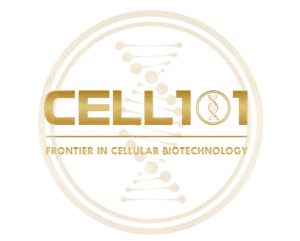Our Products & Services

MSC 101: Mesenchymal Stem Cells
-
Derived from Wharton’s Jelly (umbilical cord)
-
Autologous and allogenic options available
-
Prepared in GMP-compliant labs
-
Certificate of Analysis (COA) with every batch
-
Key benefits: tissue repair, immune regulation, rejuvenation
EXO 101: Exosomes for Targeted Therapy
-
Applications in joint care, skin health, hair regeneration, and overall vitality
-
Intravenous, intra-articular, and aesthetic usage
-
Derived from MSCs or immune cells using patented methods
IMMUNE 101: Personalized Immune Cells
-
Culture of patient-derived Natural Killer (NK) Cells
-
Upcoming: Dendritic Cell Vaccines & Targeted T-cells
-
Immune profiling and immune-derived exosome development
Comprehensive Therapy Management
We don’t just provide stem cells — we manage your full journey:
- Assessment & Diagnosis – full screening & diagnostics
- Preparation – detox, chelation, supplements, IVD therapy
- Cellular Therapy – MSCs, immune cells, PRP, exosomes
- Maintenance – follow-up care, reassessments, lifestyle support
1. Are stem cells a cure-all solution for diseases?
No, stem cells are not a universal cure. They support the body’s natural repair mechanisms by enhancing its ability to heal and function. Proper treatment protocols must be followed, and it’s essential that the procedures are administered by qualified, certified professionals.
2. Are stem cell treatments safe?
Safety depends on the cell source and how they are prepared. For example, mesenchymal stem cells (MSCs) from umbilical cord Wharton’s Jelly are generally well-accepted, while blood-derived stem cells need careful donor matching. A full medical evaluation is required to ensure suitability and minimize risks.
3. What’s the difference between fresh and frozen stem cells?
- Fresh stem cells are used immediately after preparation (usually 7–10 days).
- Frozen stem cells are stored and used on demand but may lose over 50% of their effectiveness compared to fresh cells.
4. What is a “cell passage”?
Cell passage refers to how many times the cells have been replicated in the lab. The safest and most effective are typically between Passage 3 to 6. Earlier passages (1–2) may lack purity, while later ones (above 6) may lose potency or pose safety risks.
5. How many stem cells should I receive?
There’s no one-size-fits-all dosage. Factors like body weight, age, health status, and medical conditions are considered. Our team uses a personalized approach to determine the appropriate amount based on your health goals.
6. Can I take 100 million cells in one session?
While it’s technically possible, the body only uses what it needs. Excess cells may go into a dormant (senescent) state and eventually be eliminated. It’s more effective to split the dosage across multiple sessions, guided by a proper treatment plan.
7. How do I know if the treatment worked?
We establish clear expectations and outcomes before starting treatment. Success is measured using both objective tests and your own reported improvements. Regular follow-ups help us track your progress.
8. How often should I repeat stem cell therapy?
This depends on your condition and response to treatment. Some patients may benefit from annual sessions, while others may go longer. A proper maintenance and follow-up program helps extend the benefits.
Setting up a regenerative practice? We support:
• Clinic setup consultation
• Product licensing support
• Custom protocols & training
• Lab collaborations
